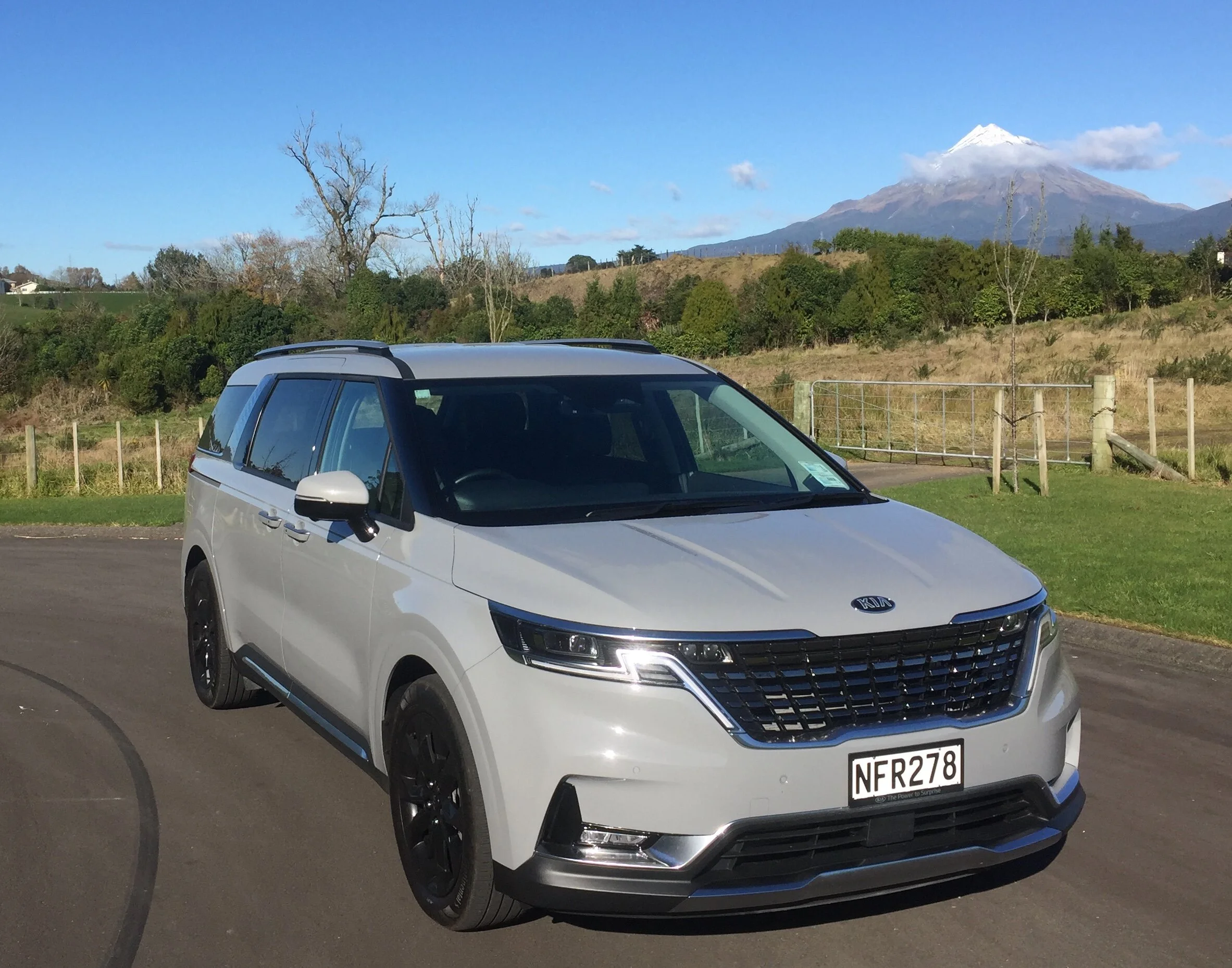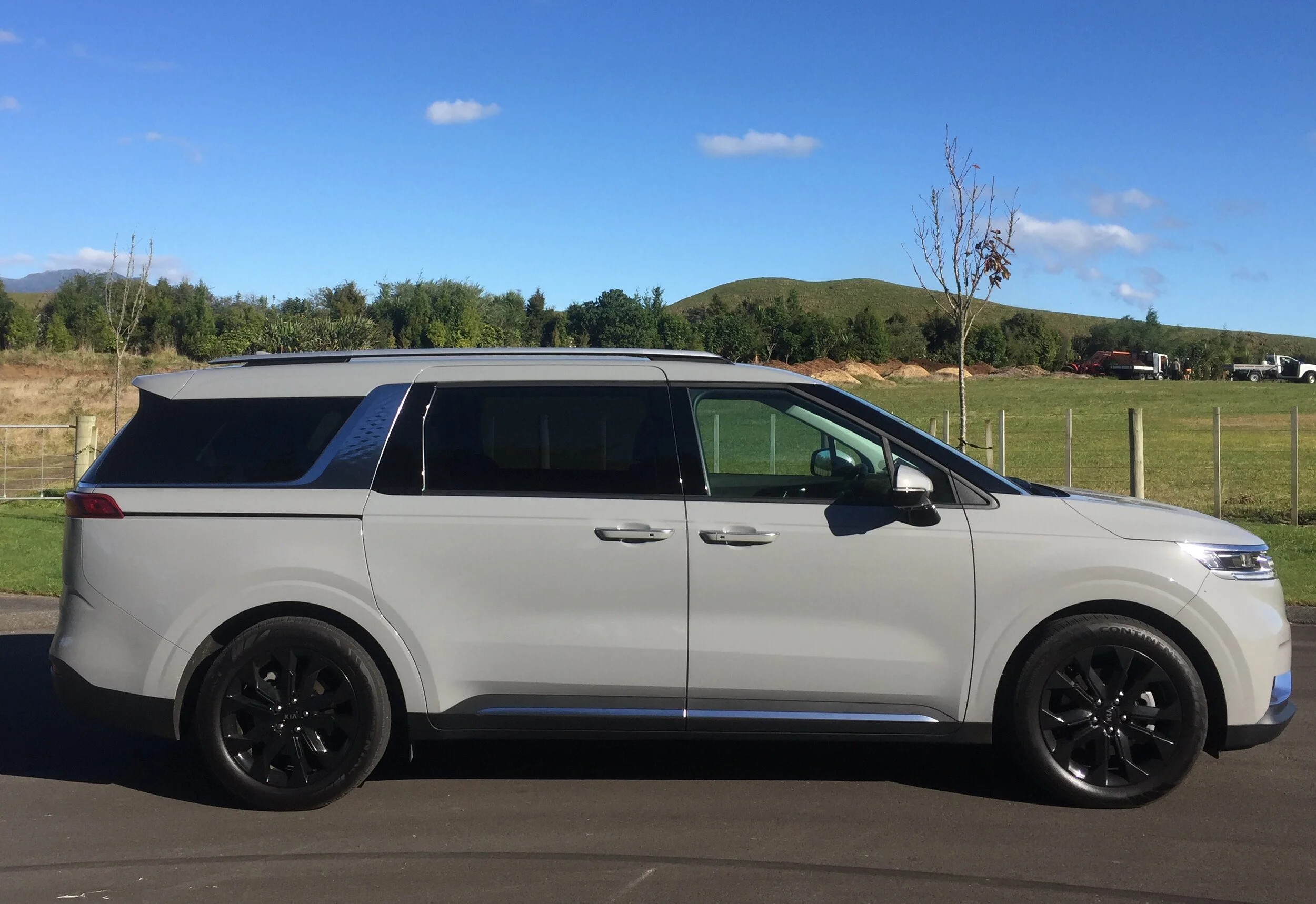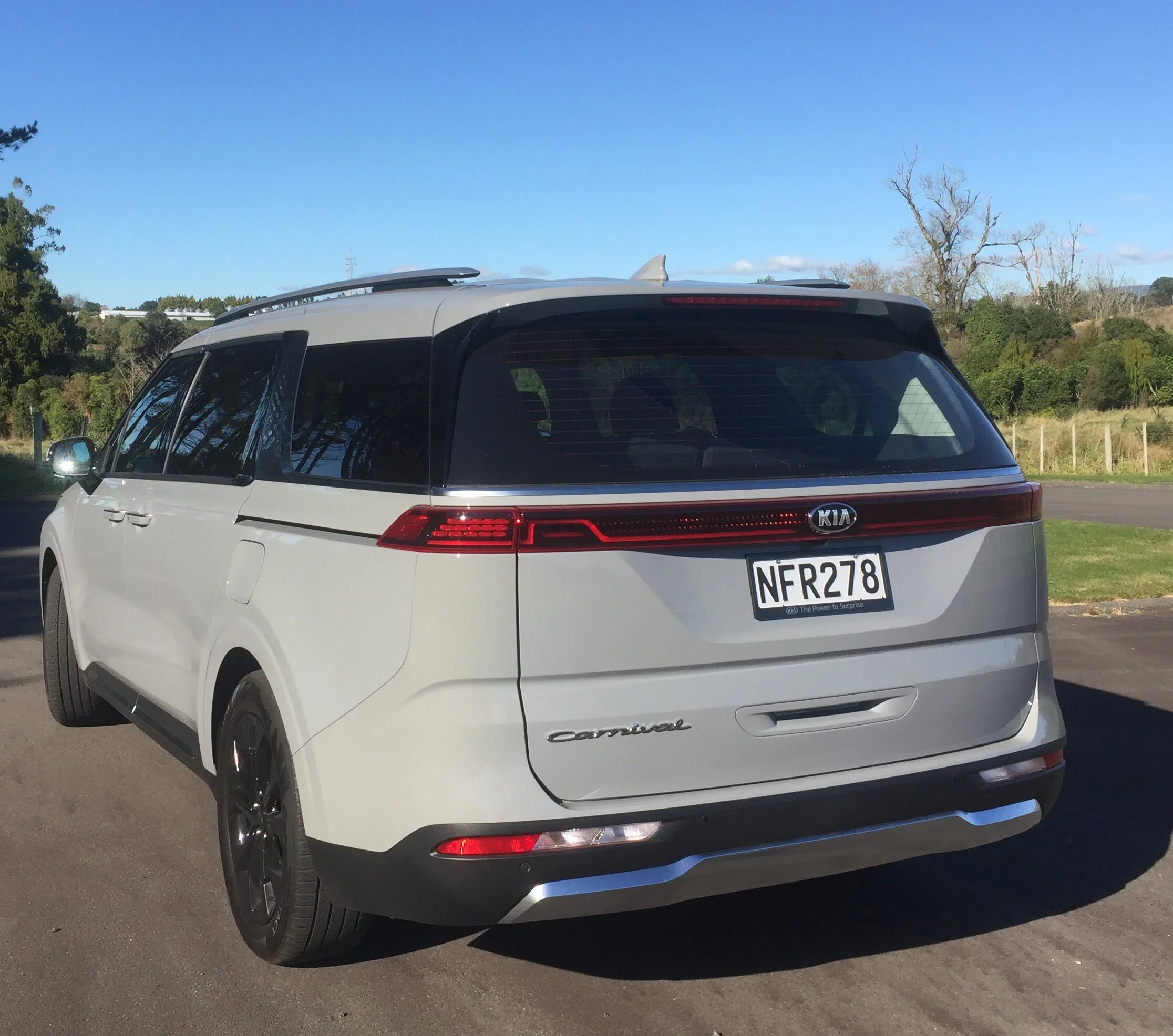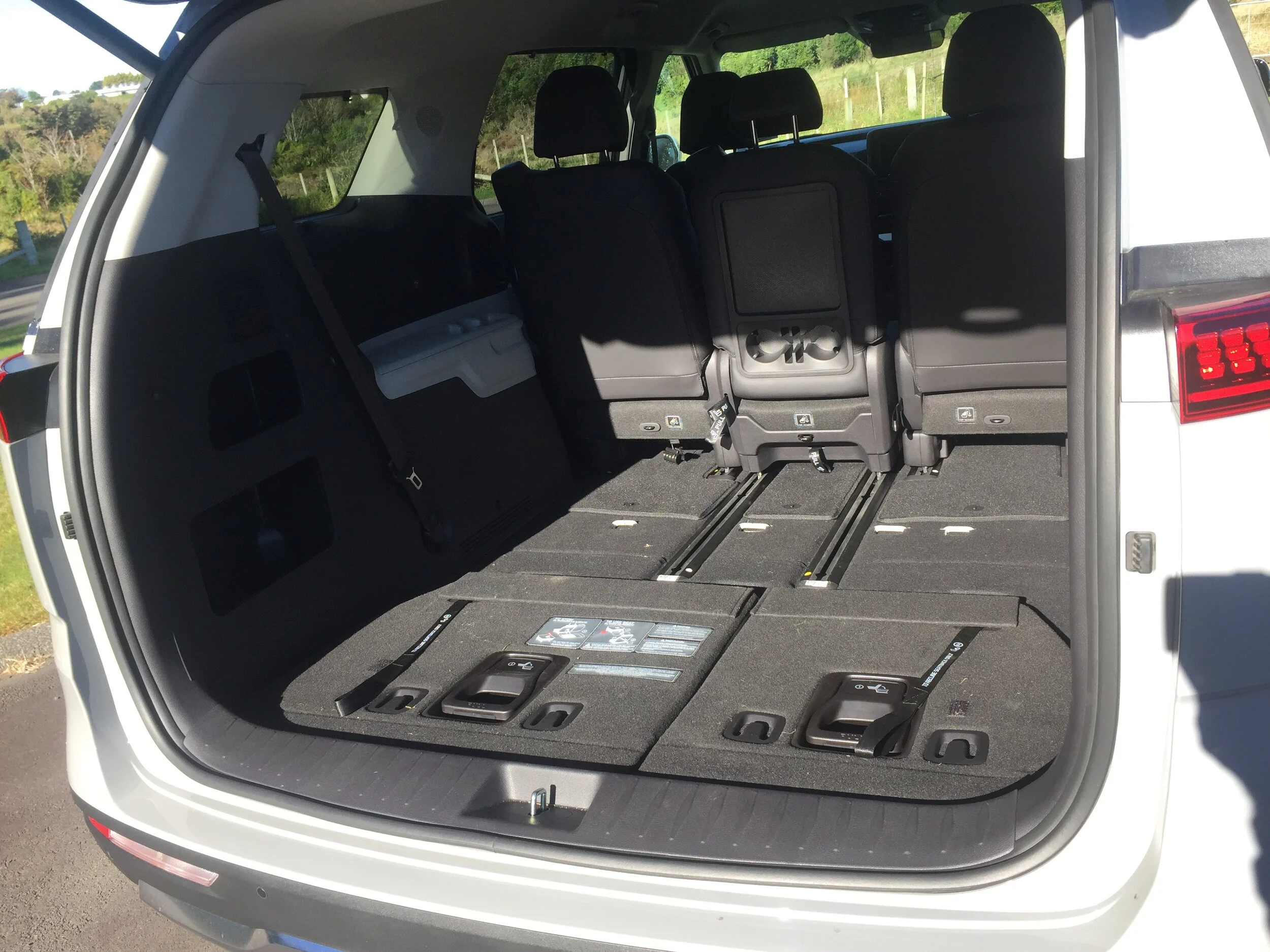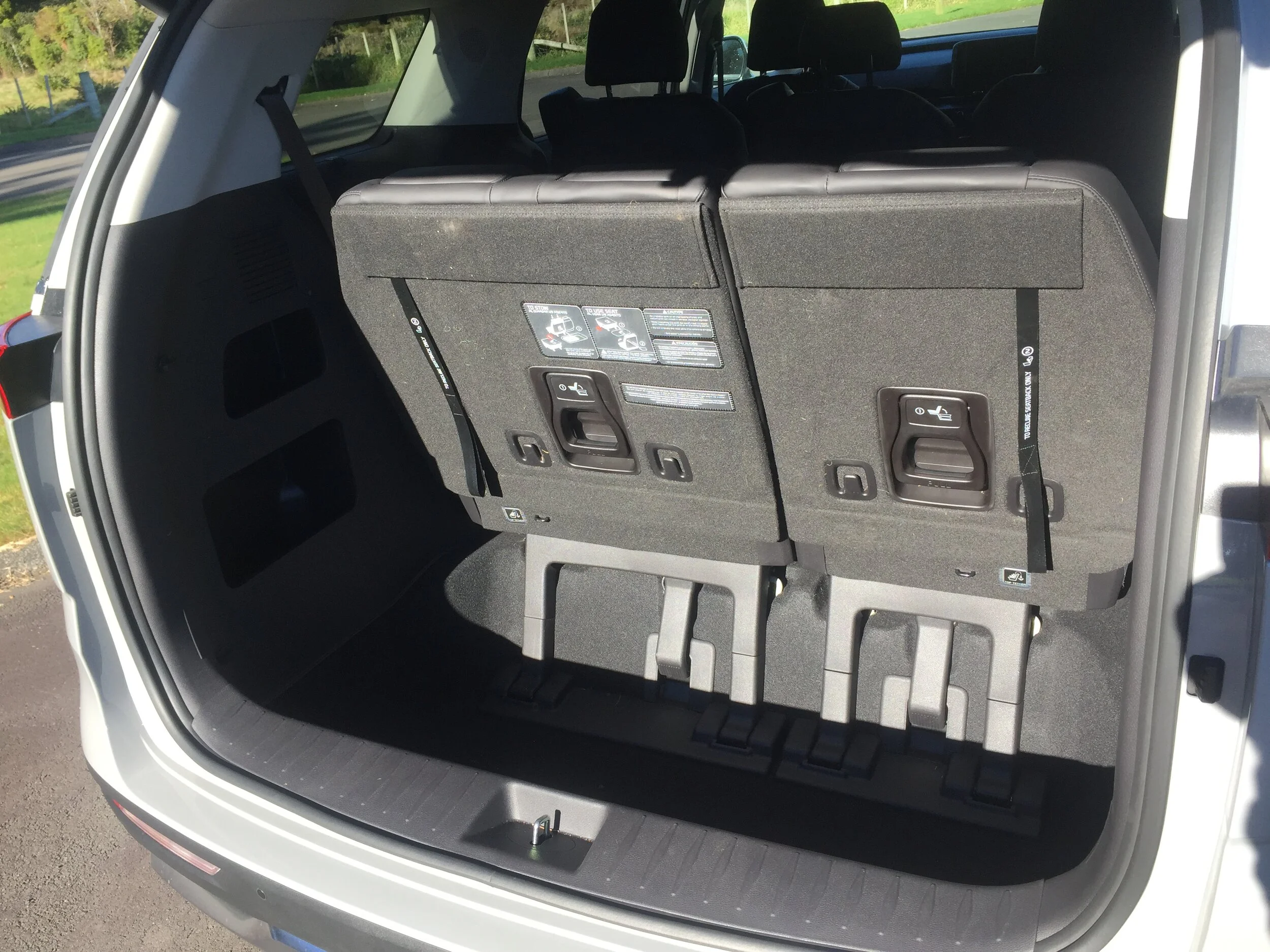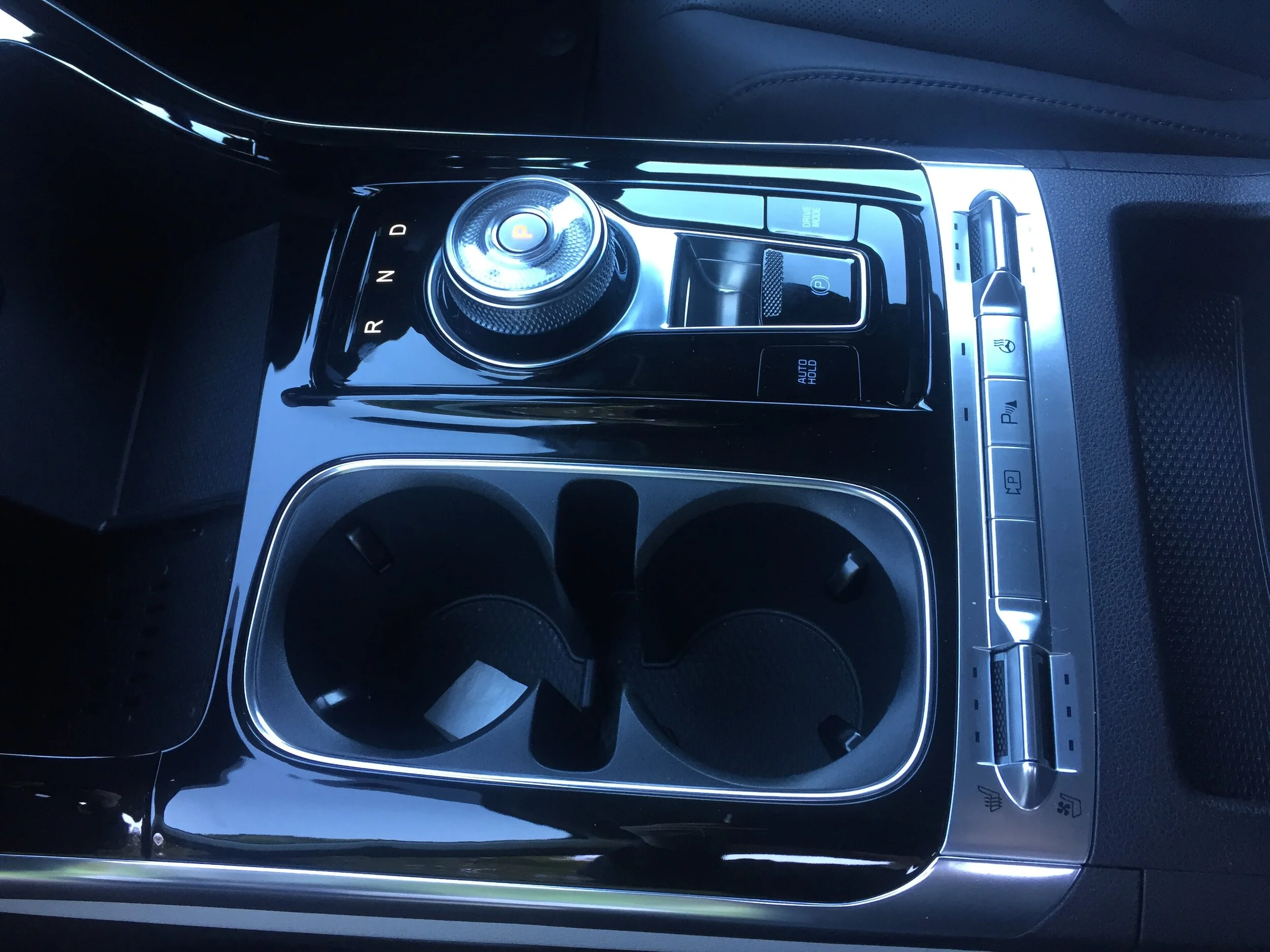Kia Carnival Elite review: Human resources deportment
/Kia biggest offering is a people-mover. Honestly, that shouldn’t be a turn-off.
Price: $74,990
Powertrain and economy: 2.2-litre turbocharged in-line diesel, 148kW/440Nm, 8-speed automatic, front-wheel drive, combined economy 6.5 L/100km, 170 g/km.
Vital statistics: 5155mm long, 1995mm wide, 1775mm high, 3090mm wheelbase. Luggage space 627-2785 litres. 19-inch alloy wheels.
We like: Excellent interior space, versatility, specification, quiet and comfortable drive.
We don’t like: Personal jury is out regarding exterior design; E-Shift gear selector dial fiddly.
C’MON, admit it: You purchased your large SUV for what purpose, exactly?
You might say you chose it because it is rugged and can go off the road. But in actual fact most people buy such vehicles for their size, interior room and comfort.
In other words, to move people rather than mob mountains.
There is another way of doing this, you know. You could buy a multi-purpose vehicle, aka a MPV, aka a people-mover, for good reason that they are designed specifically to carry people and their luggage in a more car-like manner.
A more obvious motoring choice than many people realise, but not a lot of people go that way. MPVs achieve a fraction of the volume secured by large SUVs. In this year’s first quarter 6015 large SUVs were registered against just 431 MPVs – a one percent share of the action.
The public perception of people-movers probably has a lot to do with that. SUVs are far better at massaging egos than MPVs. A lack of model choice probably contributes as well. Nowadays it’s either the Kia Carnival featured today or the Honda Odyssey.
And not the Toyota Granvia, Ford Transit Tourneo and the Volkswagen Multivan? They’re all spun from commercial vans rather than being bespoke passenger models. As far as I’m concerned they don’t count.
The fourth-generation Carnival provisions in EX, Deluxe and Premium guises, all powered by the same ‘Smartstream’ 2.2-litre turbo-diesel engine also powering the Sorento SUV.
Gee, this is an impressive people-mover. It’s big, as in 345mm longer than a Sorento and with a 275mm longer wheelbase, and as a result it comfortably houses three rows of seats all of which have plenty of leg room. Flexible too, as the second row slides forward and back to create even more room for those in the very back.
Even with all eight seats in use there’s still 627 litres of cargo space, with a good portion of that room made available via a deep cubby that is well below the lift-over height for the cargo area.
That cubby also accommodates the third row of seats when they are not in use, so the enlarged rear load area can be flat. And if the second row of seats is also folded down, a van-like 2785 litres of cargo space can be created.
From a vehicle design point of view there’s a downside to all this interior space. The rather pronounced slab-sided exterior look. It has to be that way of course, because the rear doors are the power-sliding type which require rails that run from the C-pillar to the tail-lights.
But what doesn’t help is the design of the C-pillar, which is chrome with a subtle diamond pattern. To my eyes what it does is visually disconnect the area south of the C-pillar from the rest of the Carnival, making the MPV a bit like a stretched Sorento.
The appearance when viewed from the front or rear is much better. The front features Kia’s signature ‘tiger nose’ design and with various trim elements obviously copied from the brand’s SUVs, while at the rear the big people-mover has a clean look featuring a full-width light bar. And of course – here we go again – there’s an SUV-like metallic lower skid plate.
Notice I keep mentioning a connection between the Carnival and Kia’s SUVs, particularly the Sorento. That’s because there are indeed strong family ties. The MPV is built on the same global platform as the Sorento, with the major difference being its stretched wheelbase which is now 3090mm compared to Sorento’s 2815mm.
Both the MPV and the SUV are powered by the same turbodiesel engine which makes 148kW and 440Nm, and they both have an eight-speed automatic transmission. Our test vehicle was the top model, the $74,990 Premium, and just like the Premium version of the Sorento this one has an E-Shift dial that uses shift-by-wire technology in place of the traditional gear lever that is aboard the EX and Deluxe models.
I remember when I drove the Sorento a short while ago I was a little critical of this E-Shift, suggesting that the lack of a gearshift removed a sense of involvement with the vehicle. Maybe because it is a front-driven people-mover and not a 4WD recreational vehicle, I found I wasn’t as critical of the Carnival.
It’s still a bit of a pain though, with one major gripe being that after reversing out of a driveway, you must be completely stationary before being able to dial from reverse to drive. I’m convinced things are much easier with a traditional gearshifter.
Like the Sorento, the Carnival has a Drive Mode Select system that allows the driver to select Comfort, Eco, Sport and Smart settings, and the vehicle also has paddle shifters on the steering wheel. Not that all this is needed. Not really. After all, why would you want to punt along a big vehicle with eight people on board?
But I suppose the good news is that it is all there if you need it, even though Kia says development of this new Carnival focused on delivering more of an easy-going and comfortable ride.
With that in mind, although the front suspension continues to be MacPherson strut, there’s a new multi-skeletal cross-member and new geometry to better distribute lateral loads and to improve ride comfort over broken surfaces.
The multi-link rear suspension has also been revised to better absorb shocks from the road, and the angle of the shock absorbers has been made more upright to improve load space in the cargo area.
It all adds up to what is a very good people-mover drive. Helping in this regard is improved NVH thanks to plenty of insulation and sound-deadening, including insulation around all four wheel arches, a full underbody cover to reduce wind and road noise, and dense insulation between the engine bay and passenger compartment.
Carnival also has a new motor-driven power steering system that has replaced the previous model’s hydraulic power steer. It’s an important change, because not only is it more responsive thanks to a 5.6 percent quicker steering ratio, but it also enables many of the vehicle’s latest driver assist technologies, which rely on an electric power steer motor.
In that regard, this new Kia is pretty well loaded. Safety technologies in all models include forward collision avoidance with car, pedestrian and cyclist detection and freshly-developed junction assist, lane keep assist, blind spot collision avoidance, intelligent speed limit assist, drive attention warning, high beam assist, smart cruise control, and lane follow assist.
The Premium version also has an around view monitor which I found to be very useful aboard a vehicle of this large size, and a thing called rear occupant alert which uses sensors to detect passengers in the second and third rows and alerts the driver to help prevent people being left behind in the rear seats. Talk about a first-world people-mover feature…
And here’s another. The Carnival has safe exit assist, which prevents the power-sliding rear doors from opening – and young passengers exiting the vehicle – if the system detects a car approaching from behind on either side of the vehicle.
Further distinctively people-mover features can be found within the Carnival’s infotainment system, which among other things offers a selection of so-called ‘sounds of nature’ settings that play in the background during a journey.
It also offers a quiet mode where only the driver can listen to music rather than it play through the entire 12-speaker Bose system. And not only that, but the system can be used for passenger talk, where the driver can announce things that can be heard by those in the very back seats.
The Carnival Premium has a 4.2-inch driver instrument cluster and a 12.3 inch touchscreen for the infotainment and navigation. There is also the ability to connect two smartphones via Bluetooth at the same time, which enables separate phones to be used for phone calls and media. There’s also wireless phone charging, with the centre console tray alerting the driver if a phone is left behind when exiting the vehicle.
It’s difficult to fault the Kia Carnival, which does a magnificent job in fulfilling its reason for being – which is as a spacious, practical and comfortable people-mover.
Maybe there’s a slight exterior design disconnect, and I’m still not convinced about the worth of that rotary gear selector. But it does so many other things so very well. And, although at $74,990 the Premium version isn’t cheap, it is less expensive than a Sorento.
More’s the pity then that not a lot of motorists recognise the worth of the people-mover genre.

